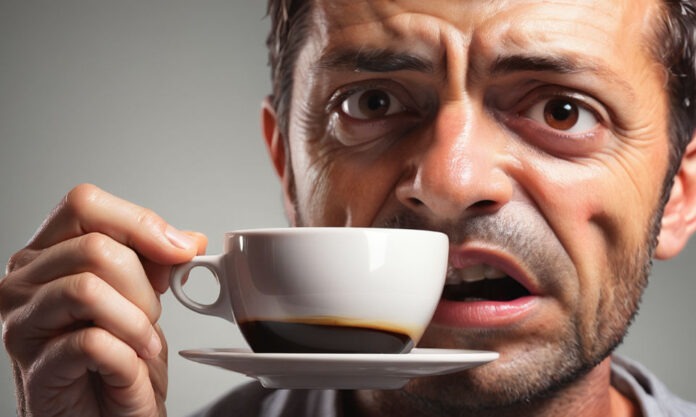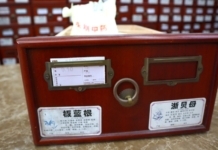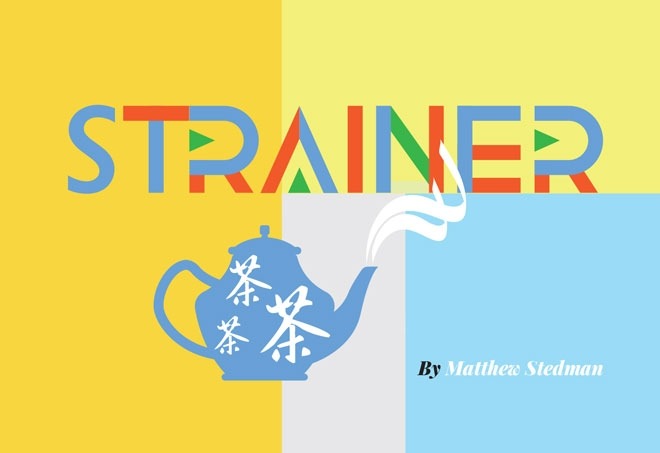So you drink coffee? Fair enough. You’re not alone. It’s an easy mistake to make.
There’s plenty of time to remedy your error. If you’re reading this here in China, you have ample opportunity to switch yourself on to a better pick-me-up.
Let me try and make a pitch.
I need to start with that smell you’re emitting as a coffee drinker. Coffee-roasting smells great. Coffee brewing smells great. Luckin smells delightful. You probably don’t, not unless you chased up your last cup of Joe with a gallon of water. Unless you brushed your tongue, let’s assume you’re broadcasting that dry-mouth whiff throughout your workplace.
Sure, people are tolerating you. That’s only because they are addicts too.
Additionally, if you’re carrying a flask of instant coffee, you’re likely surrounded by an odiferous halo of burnt plastic. Tea simply doesn’t do this. In fact, tea is believed to possess anti-bacterial properties, actually improving the oral equation.
Milky or pure tea doesn’t parch the environment to the same degree as coffee. It doesn’t pucker the palate so publicly.
Now, it’s time to discuss another elephant; the delivery of caffeine. Coffee serves its drug in sudden stabs. To space out a dose sustainably, one would have to drink at least half of that cup stone cold. Imbibed while hot, coffee is going always going to be a surge phenomenon.
Tea leaves, by contrast, match the slow nutrient release of Scots porridge oats. That’s because they impart their caffeine, as well as their flavour, patiently, through cup after cup.
Moreover, tea, especially green, pairs caffeine with theanine, a compound known to smooth the panicky edge off the caffeine sensation.
Variety is a key point of differentiation, too. Looking at a range of roasted beans, there is variation, from suave suede brown all the way to patent black. But that’s still just gradations of brown.
Riffing on that same hue, tea offers similar breadth; from tangy Assam through to bookish Pu Er [普洱] or the chocolatey Keemun we sampled 2 months ago.
Then we start looking outside “black tea” (“red” as it’s called in China), and we find the deluxe grey rabbit’s ears of Fuding [福鼎] tea, Sichuan’s lurid Zhuyeqing [竹叶青], the coral sheen greens of Japan and the avocado of Anji [安吉].
That’s merely a description of their appearance; tea’s flavour range matches this paragraph to the power of four.
Sustainability is important. If you’re serious about coffee, Arabica is probably your favourite strain. And it’s a plain fact that these crops are endangered right now.
Coffee plantations desperately need a holiday that the world likely won’t give them. Camellia sinensis, by contrast, yields leaves, obligingly, year after year.
So I’ll leave you to ponder the dog breath, the caffeine crash, the monotony and the extinction. I’ll be waiting over here ready to welcome you to Team Tea.
Now, maybe you’re noticing an unfamiliar polemicism in Strainer this month. And for this, I really want to thank Nicole Han in Shanghai, who requested a more persuasive and contentious piece. This one is for you, Nicole!
Seriously, this isn’t a zero-sum game; if you’re into coffee, this column won’t tell you to give it up.
But if, for any reason, you’re holding out against Chinese tea, please try more varieties.
And please know we live here in tea paradise.












